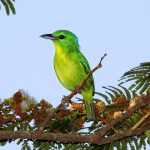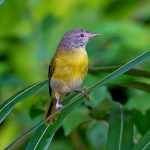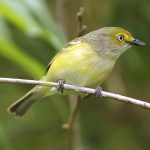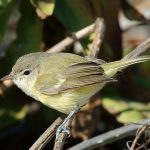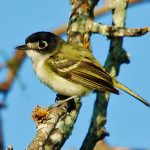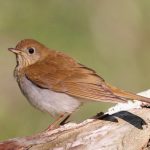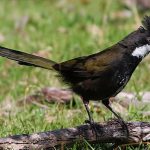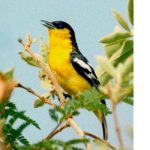Blue-headed vireo
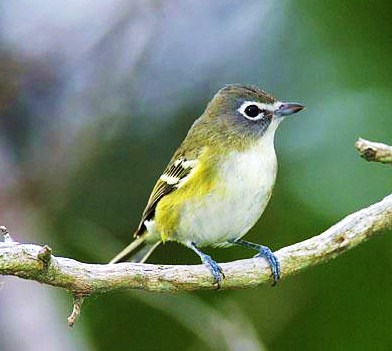
Vireo solitarius
 |
| Photo by Brandon Holden (Ontario Field Ornithologists) |
Common name:
blue-headed vireo (en); vite-vite-de-cabeça-azul (pt); viréo à tête bleue (fr); vireo anteojillo (es); graukopfvireo (de)
Taxonomy:
Order Passeriformes
Family Vireonidae
Range:
This species breeds in Canada east of the Rockies and in the north-western United States. They migrate south to winter in the south-eastern United States, along eastern Mexico and through Central America as far south as Panama.
Size:
These birds are 13-15 cm long and have a wingspan of 20-24 cm. They weigh 13-19 g.
Habitat:
The blue-headed vireo breeds in open deciduous and coniferous forests. In winter they are mostly found in scrubland, brush and thicket.
Diet:
These birds are insectivorous, taking medium to large-sized insects. In winter they also eat some fruits.
Breeding:
Blue-headed vireos breed in May-August. Both sexes build the nest, a bulky cup suspended from a fork in tree branch. There the female lays 3-5 creamy white eggs with dark spots. The eggs are incubated by both parents for 13-15 days. The chicks are fed by both parents and fledge 13-14 days after hatching.
Conservation:
IUCN status – LC (Least Concern)
This species has a very large breeding range and a global population of 7 million individuals. This species has undergone a large increase over the last 4 decades, equating to a 58.1% increase per decade.
